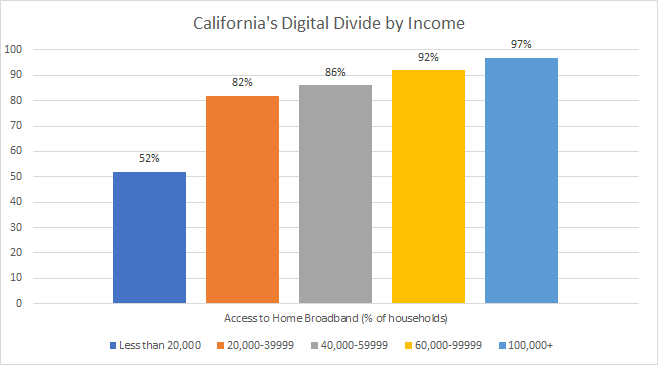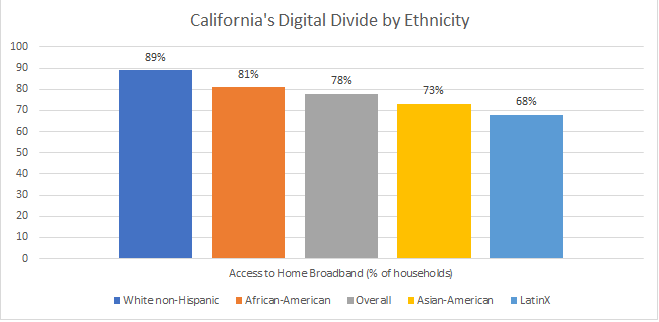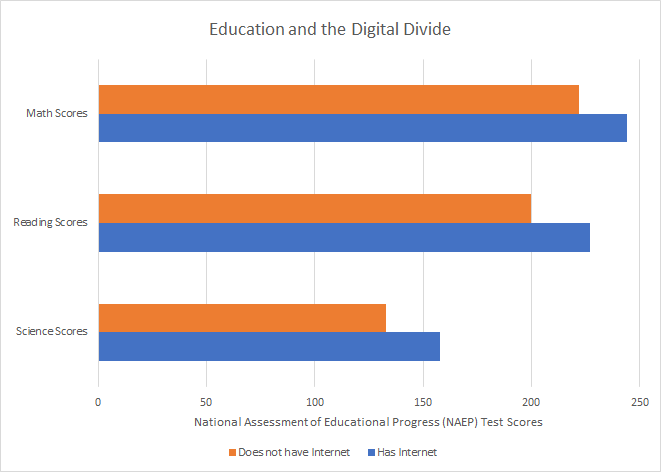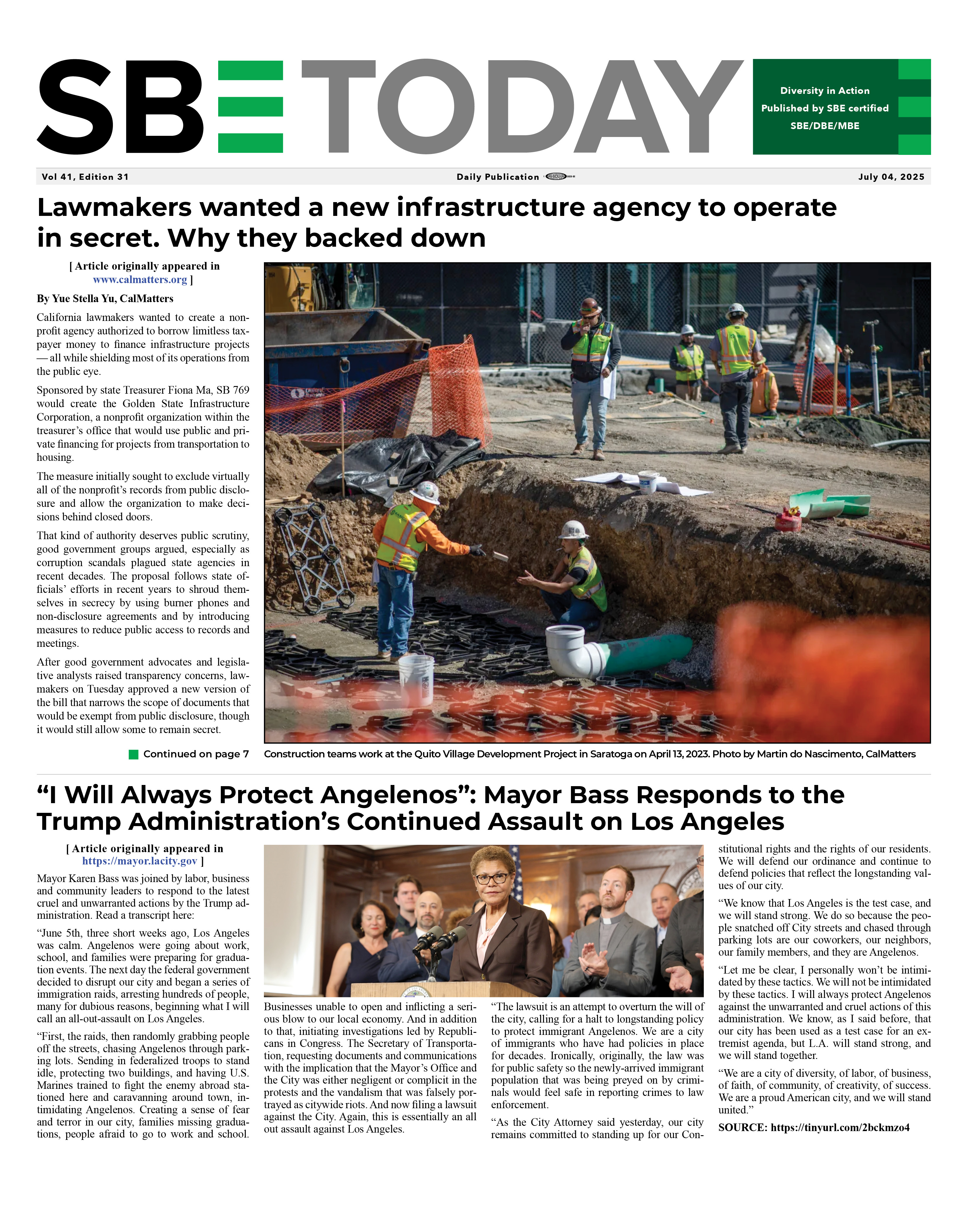By Vinhcent Le
Greenlining is helping communities of color connect to economic opportunity.
As a telecom policy expert, it’s been exciting to see 2020 presidential candidates, such as Elizabeth Warren, unveil ambitious plans to improve internet access across America. This is more important than ever because 40% of low-income households in California don’t have access to the internet at home. This means no access to job postings online, no wikipedia for homework, and no youtube videos to learn new skills. This gap between the internet “haves” and “have-nots” is known as the digital divide.
With over 80 percent of well-paying jobs now requiring digital skills, families on the wrong side of the divide have fewer opportunities to get the kind of jobs that can lift them out of poverty.

The digital divide limits economic opportunity for low-income families.

The digital divide reflects California’s racial wealth gap.
The link between internet access and economic opportunity is why Greenlining’s Technology Equity team has worked for over a decade to close the connectivity gap. This year, thanks to research funding from Citi Community Development, as well as the leadership of Commissioner Martha Guzman Aceves of the California Public Utilities Commission, we’ve been able to take proactive steps to close this gap and make internet services more affordable and accessible to the families that don’t have it. Below are some highlights of our research and the policy changes we’ve achieved thanks to that work:
Low-income students are far less likely to have internet access or a computing device, a key obstacle to academic success and economic opportunity.
We helped obtain funding to give youth on the National School Lunch Program or the Supplemental Nutritional Assistance Program free laptops, resulting in over 1,200 low-income students receiving laptops (with more to come).

Students with internet access do significantly better on standardized math, science and reading tests.
When families were asked “why” they did not have internet access, the most common answer, by far, was that it was too expensive.
We successfully pushed for rules that require Internet Service Providers developing their networks using state funding to have affordable service plans ($15/month or less) for low-income families.
Signing up for the “Lifeline” program, which provides low-cost mobile internet to low-income households, was time-consuming and difficult. People had to sign up in person, at inconvenient times and locations, or sign up by mail, which could take weeks.
We partnered with a software developer and helped persuade the CPUC to change its rules for the California Lifeline program so that applicants can enroll online and on their own schedule. This change will also allow community organizations to help more people enroll in the program.
ISPs do not provide accurate data about what areas don’t have internet access, at what speed, and at what cost. This hinders statewide efforts to increase internet availability and affordability.
Based on our advocacy, the CPUC implemented rules requiring California ISPs to provide better data on internet availability and conducted a study identifying where to invest state broadband funds and which groups were affected most by the digital divide.
We’re proud of what we’ve been able to achieve this year. However, we still have a long way to go. While the rest of the world is racing to upgrade their internet, US companies are raising prices and slowing down investment in next generation internet networks. A prosperous and connected California requires a public and private commitment to making sure that every student has access to the internet to do homework, learn digital skills and to prepare for our increasingly tech-based workforce. We want internet access to be fast and futureproof so that California can be a leader in developing and adopting the high-bandwidth technologies of the future.
So what’s next? We plan to use our research and experience to promote better internet access policies nationwide and to push for California to adopt an ambitious “fiber for all” vision that will close the digital divide. Watch this space for more news over the next year.
Vinhcent Le is Greenlining’s Technology Equity Legal Counsel. Follow him on Twitter.





